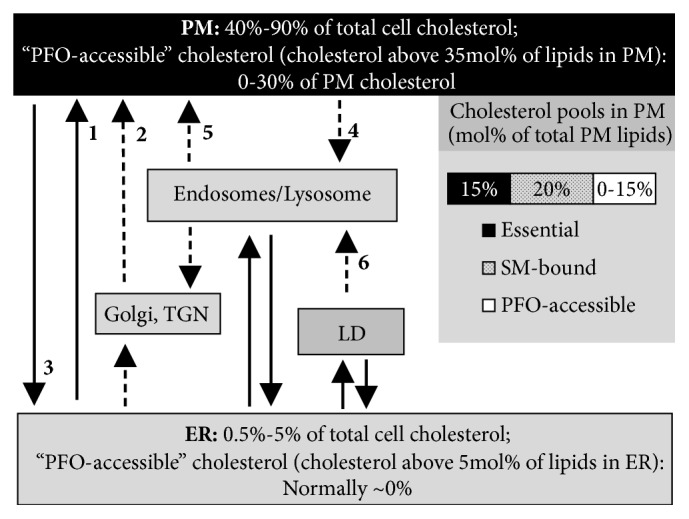Figure 1.

Cholesterol distribution and movement between major compartments. Solid arrows indicate nonvesicular cholesterol transport (including transport via membrane contact sites and lipid transfer proteins); dashed arrows indicate vesicular transport and transport of cholesterol mediated by organelles. The numbers indicate the following: (1) the major nonvesicular, not cytoskeleton-dependent, energy-dependent path of cholesterol transport from ER to PM; (2) the minor vesicular transport from ER to PM via Golgi; (3) not energy-dependent, cytoskeleton-dependent cholesterol transport from PM to ER; (4) transport of LDL bound by LDL receptor in clathrin-coated vesicles; (5) energy-dependent, cytoskeleton-dependent cholesterol transport via lysosome-related organelles; (6) lysosomal degradation of LD. Three pools of cholesterols with different accessibility to water phase are known in PM. PFO-accessible cholesterol is the most available pool for the interactions with reagents in aqueous phase, such as PFO (Perfringolysin O), cholesterol oxidase, and cyclodextrin. This pool with variable size is considered as a putative “active” cholesterol. The size of this pool is very small at cholesterol depletion, while at the increase of its size in PM cholesterol moves to the ER. PFO-accessible pool in ER appears at much smaller mol% of cholesterol. PM (plasma membrane), ER (endoplasmic reticulum), LD (lipid droplets), TGN (trans-Golgi network), LDL (low-density lipoprotein), and SM (sphingomyelin).
